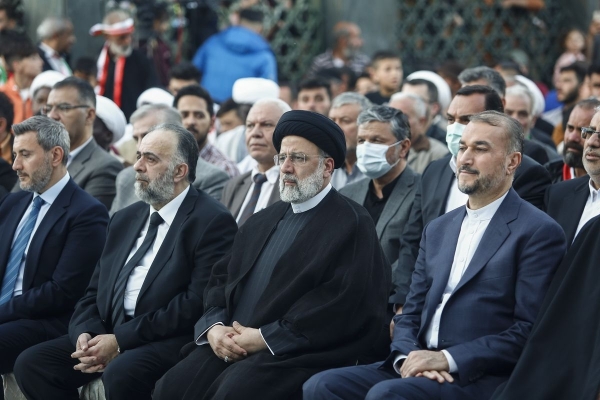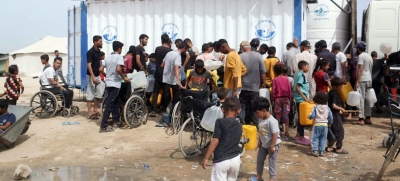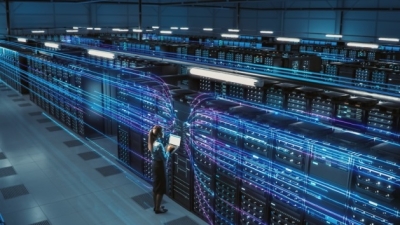A tentative deal to release five Americans held in Iran in exchange for access to $6 billion in assets and the release of people imprisoned in the US could hit major snags — or fall apart altogether — in the weeks before it’s complete due to persistent and escalating tensions between the US and Iran.
The agreement, which Secretary of State Antony Blinken detailed Thursday, was negotiated by the US and the Islamic Republic of Iran over a period of two years, according to the New York Times, and was facilitated by Oman, Qatar, and Switzerland. Though the agreement does involve the eventual release of prisoners by both parties, Iran’s primary motivation for engaging in the negotiations is a mechanism by which it can access billions of dollars of its own assets to purchase humanitarian goods like food and medicine.
However, trouble already seems to be on the horizon, since Iranian state news has maintained as of Friday that the government can use the released funds however it sees fit.
Iran has been in an economic crisis for years, due in part to state corruption and incompetence — but also due to harsh US-led sanctions. The sanctions have had such a chilling effect that South Korean banks holding the Iranian assets in question have refused to release them, even to purchase necessities like food and medicine, despite humanitarian carveouts built into sanctions policy.
Iran has reportedly already moved the five American-Iranian citizens from detention in its notorious Evin prison to house arrest, a positive sign that Iran is upholding its part of the deal. Three of the prisoners, Siamak Namazi, Morad Tahbaz, and Emad Sharghi, have been held in detention on unsubstantiated charges of espionage and have served at least half of their sentence. Two others have not yet been identified in the press.
The US has so far declined to acknowledge that it will release any prisoners held in the US, much less how many people it will release under the deal or any of their identities. However, people familiar with the deal told the New York Times that a handful of Iranian nationals incarcerated for evading US sanctions against Iran will be released once the prisoners currently in Iran are safely back in the US.
Despite the apparent diplomatic victory, though, there is still plenty of time for it to go south; Qatar has agreed to facilitate Iran’s humanitarian purchases, but the mechanism through which that will take place could take more than a month to implement. That’s plenty of time for the deal to unravel, given the fact that the US has announced plans to put Marines on vessels transiting the Strait of Hormuz to ward off attacks by Iran-linked groups.
The negotiations were complex and took more than two years
Details of the negotiations themselves are scarce, but as CNN reported Friday, they are the culmination of more than two years of complex and sensitive talks — made even more challenging by the fact that the US and Iran have no diplomatic relationship.
Qatar, Oman, and Switzerland were instrumental in hammering out the final deal, acting as the mediators between the Islamic Republic and US officials during sensitive meetings in Doha, Qatar’s capital. Iranian officials had refused direct meetings with Washington, but Switzerland manages US affairs in Iran, and Oman has significant experience negotiating similar agreements, including one in May between Belgium and Iran.
“These two Gulf countries, Oman and Qatar, believe that the other is playing a useful role — there’s no competition between Oman and Qatar in terms of trying to establish one or the other as the main back channel or diplomatic bridge between Iran and the West,” Giorgio Cafiero, CEO of Gulf State Analytics, told Vox. “They are working in tandem and they have many of the same interests in terms of easing tensions between Iran and its regional and international adversaries.”
Qatar in particular plays a critical role in relations between the US and Iran because its close relations with both countries make that a necessity; as Cafiero told Vox, Qatar depends on the US for its national security but is a partner with Iran in the world’s largest gas field, the South Pars/North Dome gas-condensate field in the Persian Gulf. Coordination on development in the field is critical for Qatar as one of the world’s largest producers and exporters of liquefied natural gas (LNG).
Ties with Iran were also critical during the Saudi blockade of Qatar from 2017 to 2021. “The Qataris had to rely on Iranian ports and Iranian airspace for much of their international trade during that crisis,” Cafiero said.
Participating in and trying to manage de-escalatory talks between the two nations is critical to Qatar’s national interest — which may be why the emirate has stepped up to play such a critical role in the negotiations. “Qatar does not want to see an armed conflict between Iran and the United States,” Cafiero said. “That scenario would be extremely dangerous for Doha from the standpoint of Qatar’s economic and security interests.”
In addition to being a mediator between the US and Iran, Qatar will also essentially manage the $6 billion in Iranian assets now in South Korea. That money, proceeds from oil sales, was transferred by the US to a South Korean account under the Trump administration. Despite exemptions for purchasing humanitarian essentials, South Korean administrators had frozen the funds due to the chilling effect of US sanctions, according to Ali Vaez, Iran project director at the International Crisis Group.
“Qatar has done the heavy lifting, putting the financial mechanism together” to help put the deal over the finish line, he said in an interview.
Ultimately the funds are the important part of the deal for Iran — not the Iranian nationals that the US might release. As Vaez told Vox, the Iranian health ministry estimates that 60 percent of citizens do not have enough to eat, and there is limited access to live-saving advanced medicine like cancer treatments.
The Iranian economy has been in free-fall due to major nationwide protests against the police killing of Mahsa Amini, a young Kurdish woman, last September, for wearing her hijab improperly. Now, the exchange rate for the Iranian rial is approximately 500,000 to 1 US dollar, compared to 298,200 to the dollar a year ago, and inflation is at about 47.5 percent, the Statistical Centre of Iran reported last month.
Despite a de-escalatory success, conflict is still brewing between the US and Iran
The fundamental tension of arranging a prisoner swap while also ratcheting up conflict and military presence in the Strait of Hormuz, one of the most critical commercial transits in the world, does not chart a safe path forward for the arrangement.
Although Iran has engaged in de-escalatory actions with adversaries like Saudi Arabia and the US, that does not mean that the regime has fundamentally changed, Vaez said. “The Biden administration is doing this deal with its eyes open,” Vaez said, calling the deal “transactional, not transformational.”
Relations between Iran and the US continue to be strained, as evidenced by the US threat to put Marines aboard US-flagged vessels in the Strait of Hormuz. As Vox’s Jonathan Guyer wrote earlier this week:
The Biden administration says that the Iranian threat to tanker traffic is the reason for the deployment of sailors and Marines. Iran seized two oil tankers in a week this past spring. Iran also intercepted a Tanzanian-flagged tanker on July 6, a day after the US Navy intervened to dissuade Iran from nearly seizing two ships. Iran has said that it sees itself as responsible for the security of the Gulf, not least because of its long coastline, and claimed it has not illegally seized tankers.
That could put the two countries at higher risk for a confrontation, Vaez pointed out, potentially scuttling the prisoner swap deal. “That is the biggest concern,” he told Vox, although other regional issues could interfere — for example, increased confrontations between Iran-backed groups or Syrian forces and Israeli troops in Syria could also put the US on the defensive, since the US is Israel’s closest security partner.
Domestic issues within both the US and Iran could also complicate matters, since factions on both sides object to the deal. Sen. Tom Cotton (R-AR) has called the deal a “ransom” and a “craven act of appeasement,” as Politico reported Thursday, and claimed that Iran would use the released assets to “attack our troops, fund terrorism, and arm Russia.”
In Iran, though the Supreme Leader Ayatollah Ali Khamenei likely supports the deal, Vaez said, there are factions within leadership that see the arrangement as “a humiliating oil for food arrangement,” referencing a UN program from the 1990s intended to offset the devastating consequences of sanctions against Iraq.
Overall, the regime has framed the deal as a major victory in state media, and as an important step in President Ebrahim Raisi’s program to stabilize the currency. But there seems to be a hitch in the plan already, as the Institute for the Study of War described in its August 11 Iran update.
Though US officials have stressed that the $6 billion released from the South Korean account is to be used only for humanitarian purchases, the Islamic Republic’s Ministry of Foreign Affairs has claimed that “the decision on how to use these unfrozen resources and financial assets lies with the Islamic Republic of Iran,” CBS reported Friday. Seyed Mohammad Marandi, identified as a media advisor to the Iranian negotiating team, claimed that Iran has “full and direct access” to the funds, and that “no Qatari company” is managing the assets.






